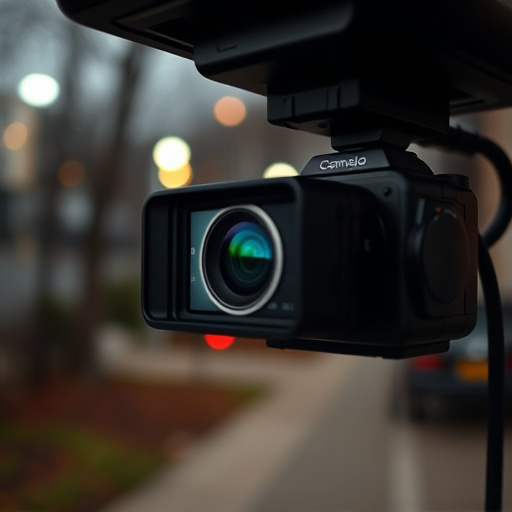Spy Camera Artificial Intelligence (AI) integration revolutionizes covert monitoring, offering real-time video analysis, pattern detection, and target identification for enhanced security operations. By combining advanced cameras with machine learning, these systems reduce manual observation, increase productivity, and minimize human biases, ensuring dynamic surveillance across sectors while adhering to ethical guidelines through transparency, proportional deployment, robust data protection, and strict access controls.
“Unveiling the power of covert monitoring with an expert guide on professional placement of spy cameras enhanced by Artificial Intelligence (AI) integration. This comprehensive article navigates the intricate world of hidden surveillance, offering insights into cutting-edge technology and its practical applications. From understanding the capabilities of AI-integrated spy cameras to exploring strategic placement techniques, we delve into the ethical considerations and best practices for responsible implementation. Discover how this technology is revolutionizing security measures.”
- Understanding Spy Camera Artificial Intelligence Integration
- Professional Placement Strategies for Covert Monitoring Systems
- Ethical Considerations and Implementation Best Practices
Understanding Spy Camera Artificial Intelligence Integration
The integration of Spy Camera Artificial Intelligence (AI) represents a significant advancement in covert monitoring systems, offering enhanced capabilities and smarter operations. AI algorithms can analyze vast amounts of video data in real-time, detecting patterns, anomalies, and specific objects or behaviors of interest. This technology enables more accurate and efficient surveillance, ensuring that professionals have the insights they need to make informed decisions.
By combining advanced camera technology with machine learning, these systems can autonomously identify and categorize individuals, vehicles, or other targets, reducing the reliance on manual human observation. This not only increases productivity but also minimizes potential biases or errors associated with human monitoring. With AI integration, covert operations become more precise, adaptable, and responsive to dynamic environments, making it an indispensable tool for security professionals in various sectors.
Professional Placement Strategies for Covert Monitoring Systems
In today’s digital era, the integration of spy camera artificial intelligence (AI) has revolutionized covert monitoring systems, offering unparalleled precision and efficiency in professional placement. When strategically deployed, these advanced systems can provide critical insights while maintaining discretion. Professionals should focus on leveraging AI capabilities to analyze and interpret data in real-time, ensuring optimal coverage without raising unnecessary suspicion. By employing machine learning algorithms, these devices can adapt to changing environments, identify suspicious activities, and accurately differentiate between ordinary behaviors and potential threats.
Professional placement strategies for covert monitoring systems involve careful consideration of factors such as lighting conditions, angles, and the specific needs of the surveillance operation. Experts recommend utilizing AI-enabled cameras in strategic locations, like corners or above doors, to capture clear footage without obstructing natural views. Additionally, employing wireless technology and remote access features allows for easy installation, maintenance, and adjustments, ensuring optimal performance throughout the monitoring process.
Ethical Considerations and Implementation Best Practices
When implementing a covert monitoring system, it’s paramount to navigate ethical considerations and best practices for integration. The use of spy cameras and artificial intelligence (AI) technologies raises privacy concerns, making transparency essential. Organizations should clearly communicate the purpose, scope, and limitations of surveillance to all stakeholders, including employees and customers. This open approach helps build trust and ensures compliance with relevant laws and regulations.
Best practices involve deploying such systems in a targeted, proportional manner, focusing on specific areas where monitoring can enhance security or operational efficiency. Regular reviews and updates to the system’s use cases and access protocols are crucial. Additionally, ensuring robust data protection measures, including secure storage, encryption, and strict access controls, is vital to safeguard sensitive information. Ethical implementation also demands regular audit trails and oversight to prevent misuse or unauthorized access.
The integration of spy camera artificial intelligence (AI) offers advanced capabilities for covert monitoring systems, enhancing both their effectiveness and ethical complexity. By understanding the technology’s potential and employing strategic professional placement, organizations can leverage these systems to achieve security goals while adhering to best practices. This guide highlights essential considerations, ensuring a responsible approach to implementing AI-integrated surveillance solutions.
